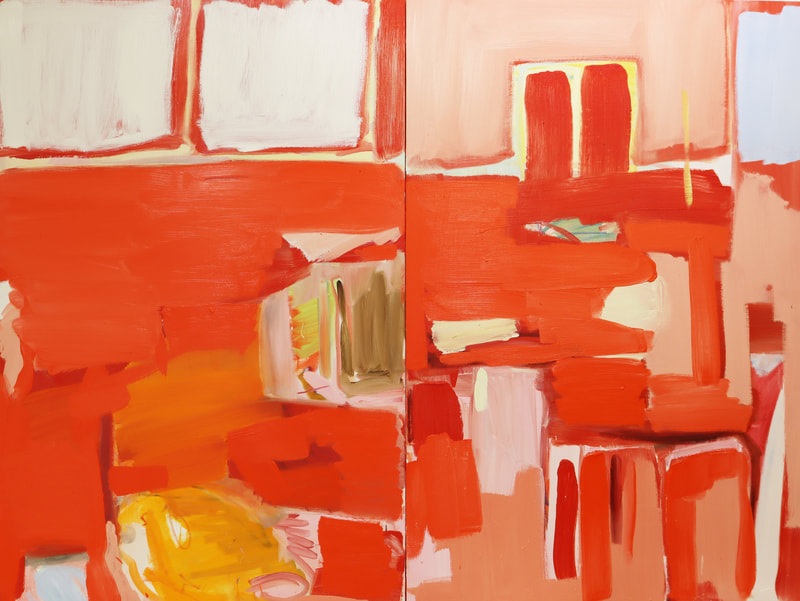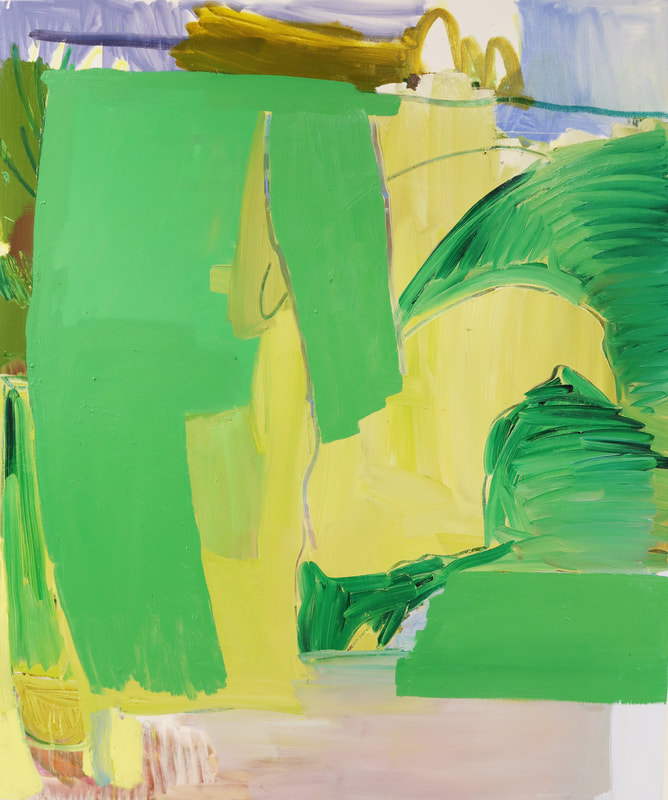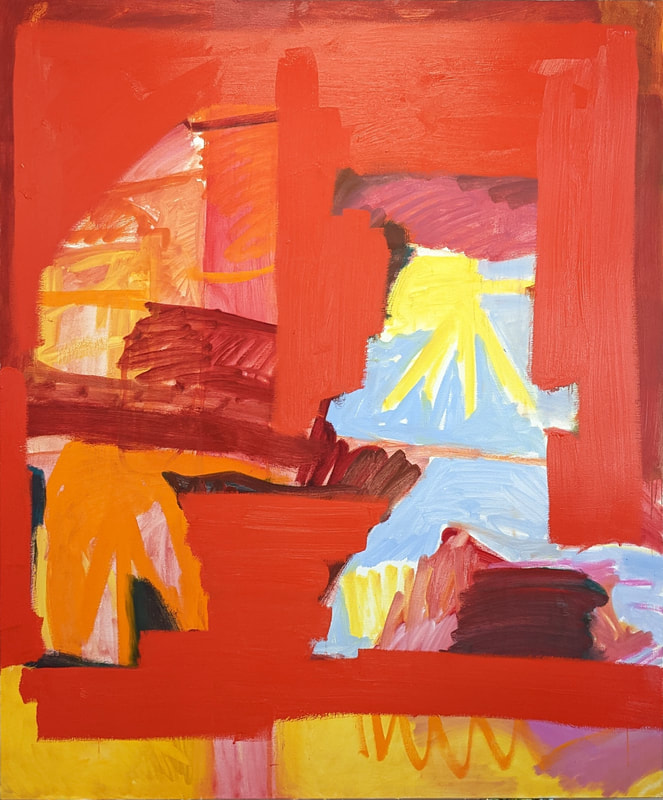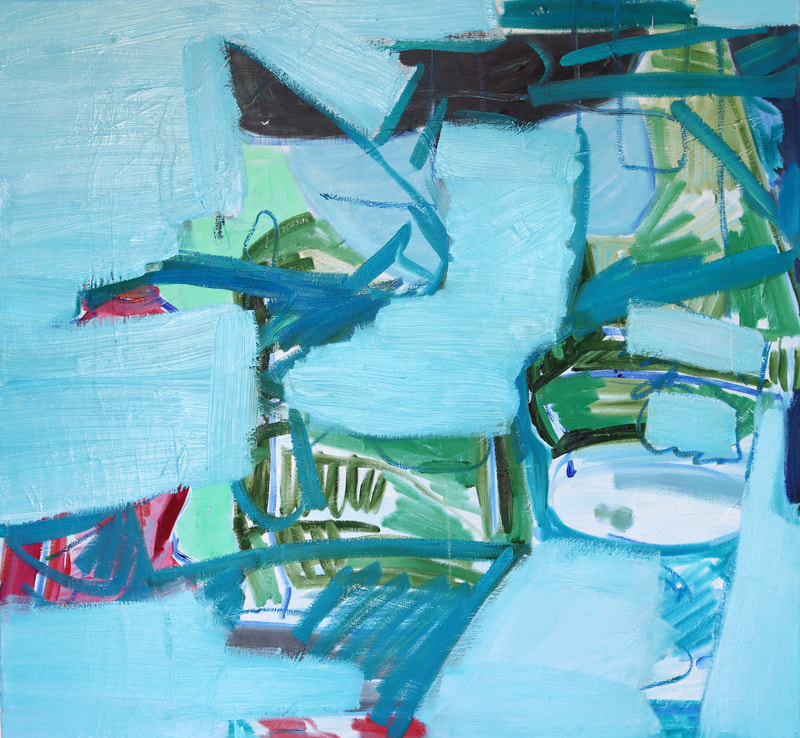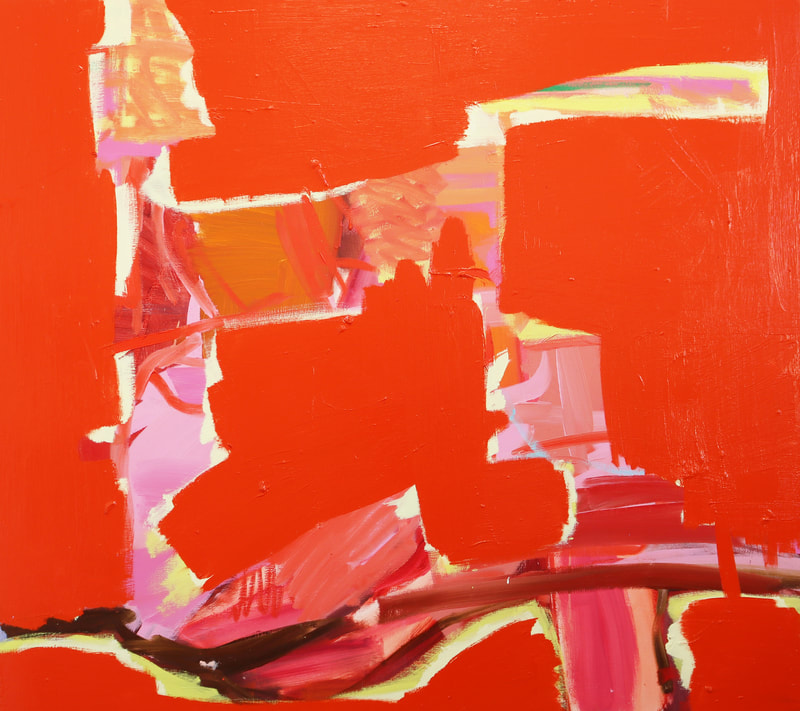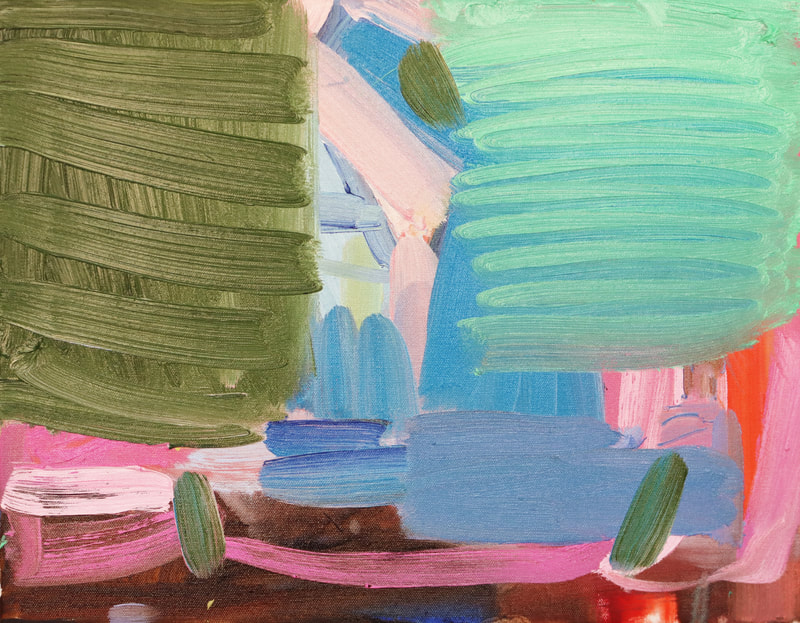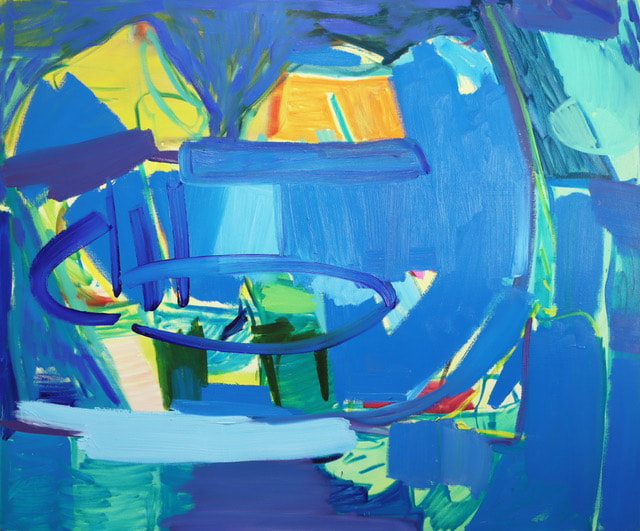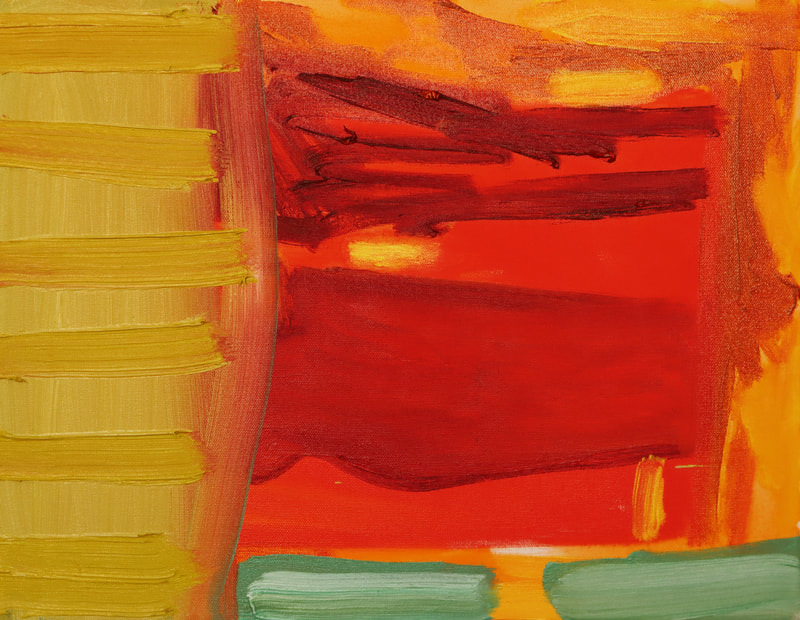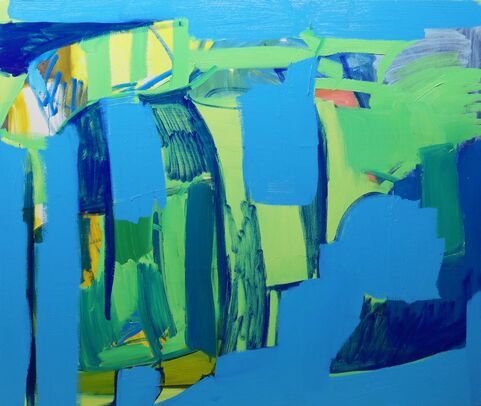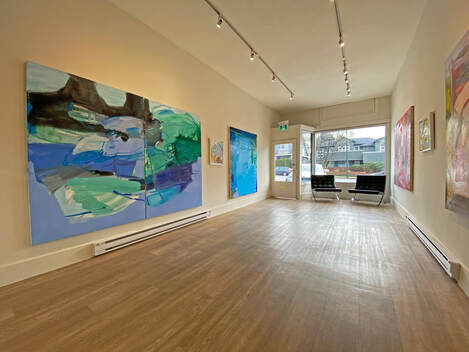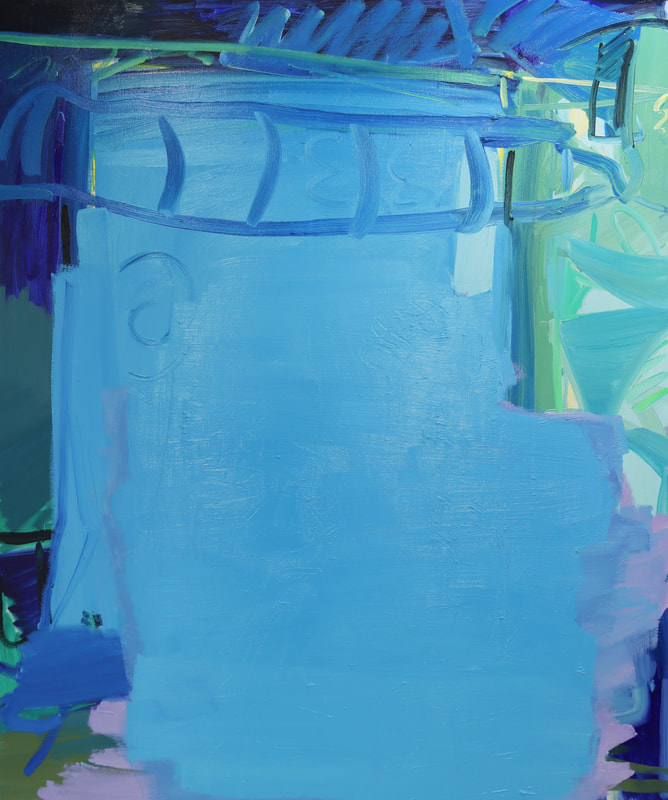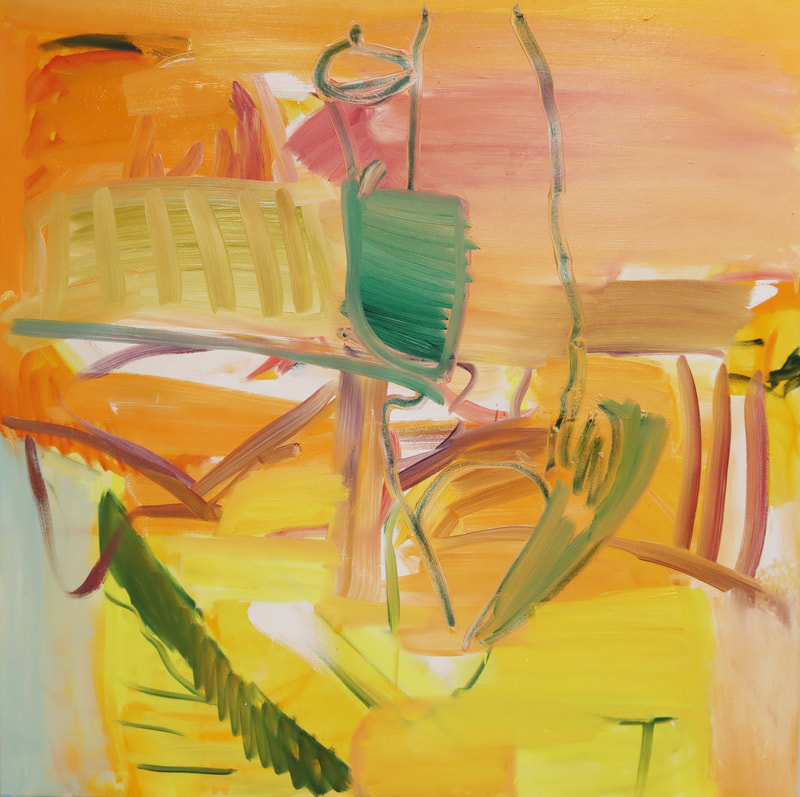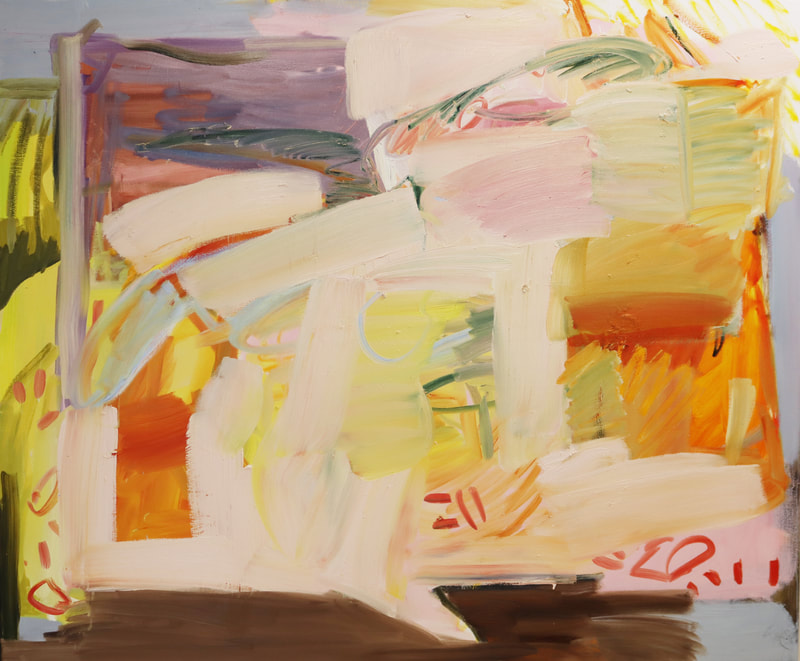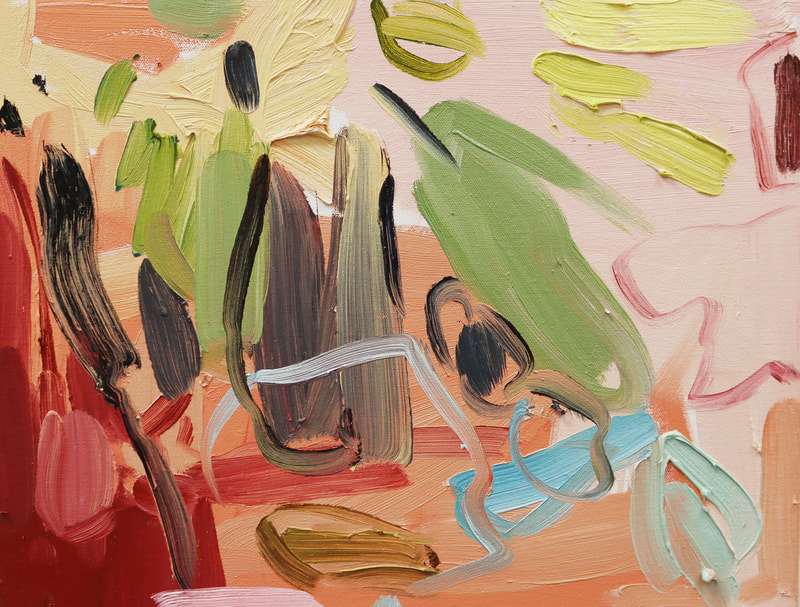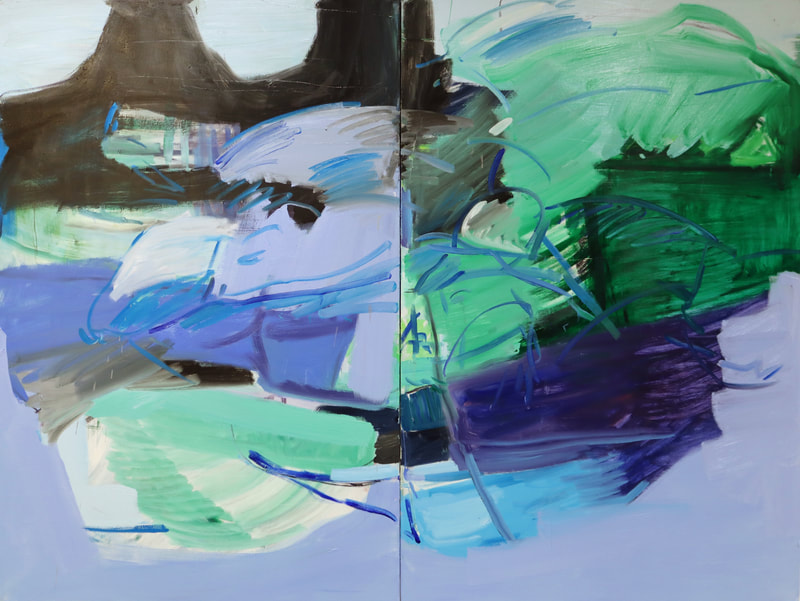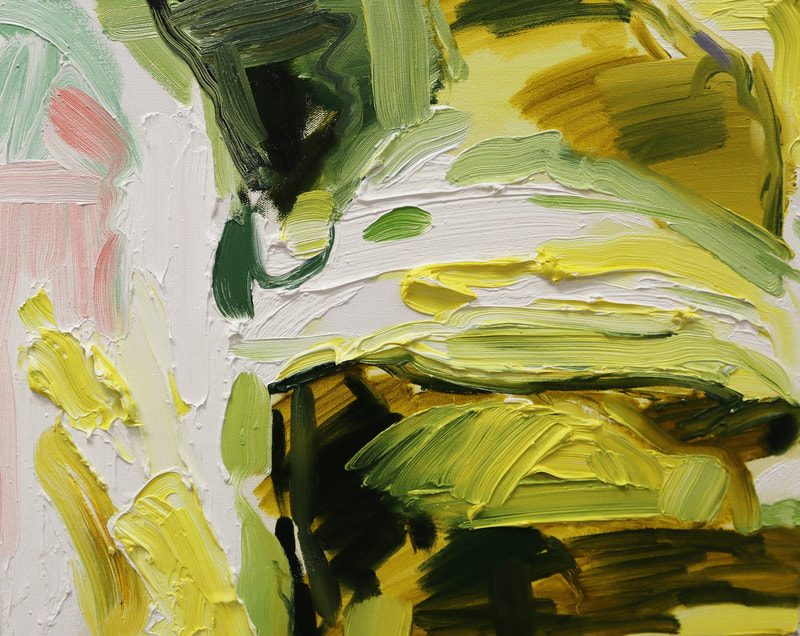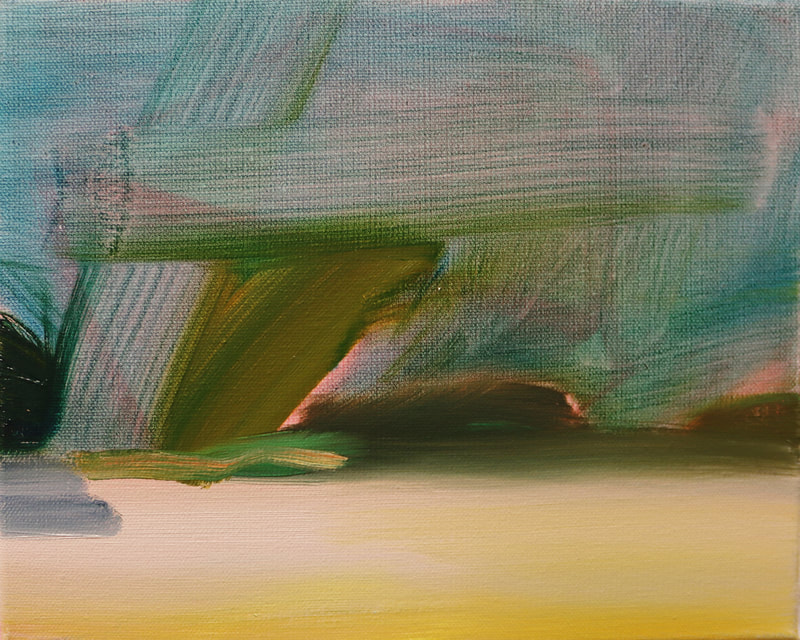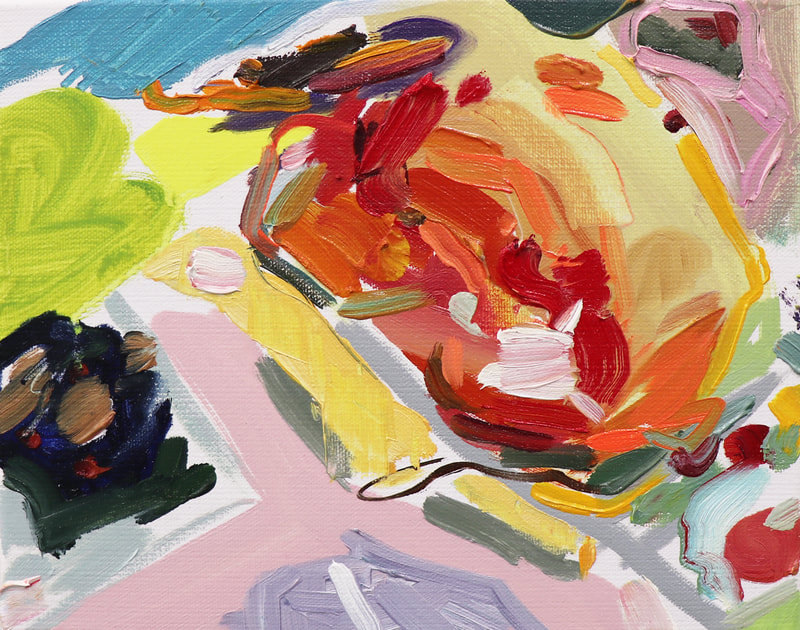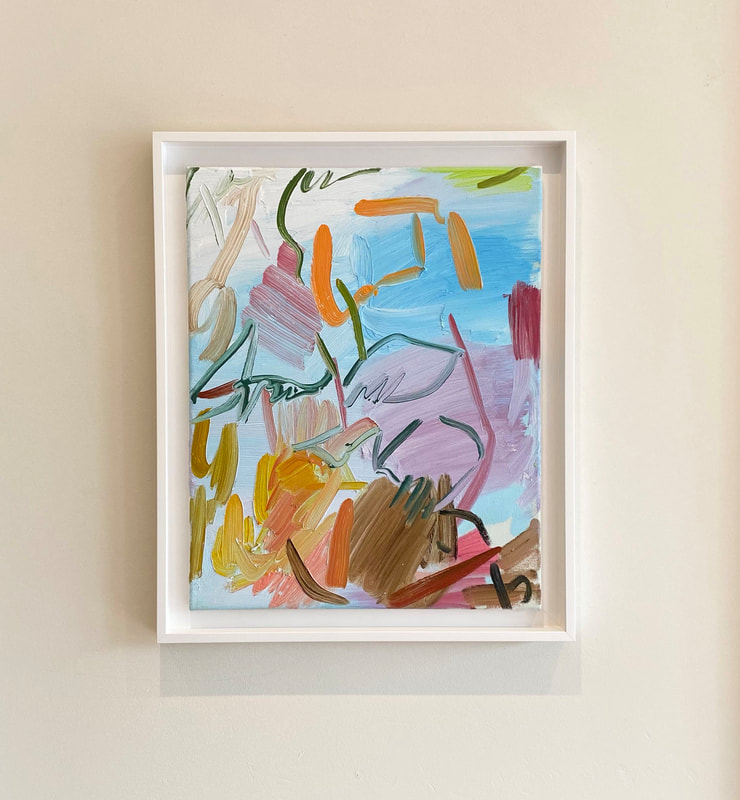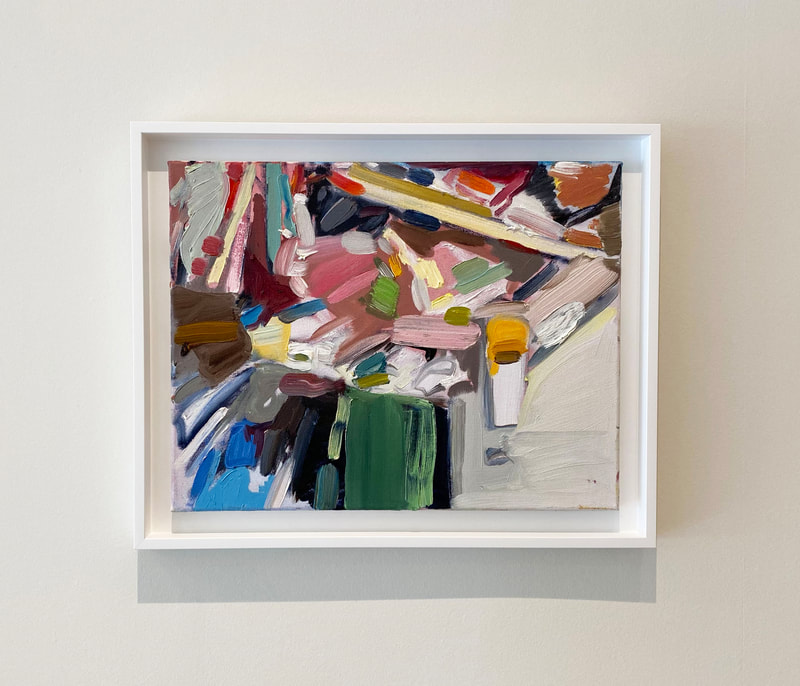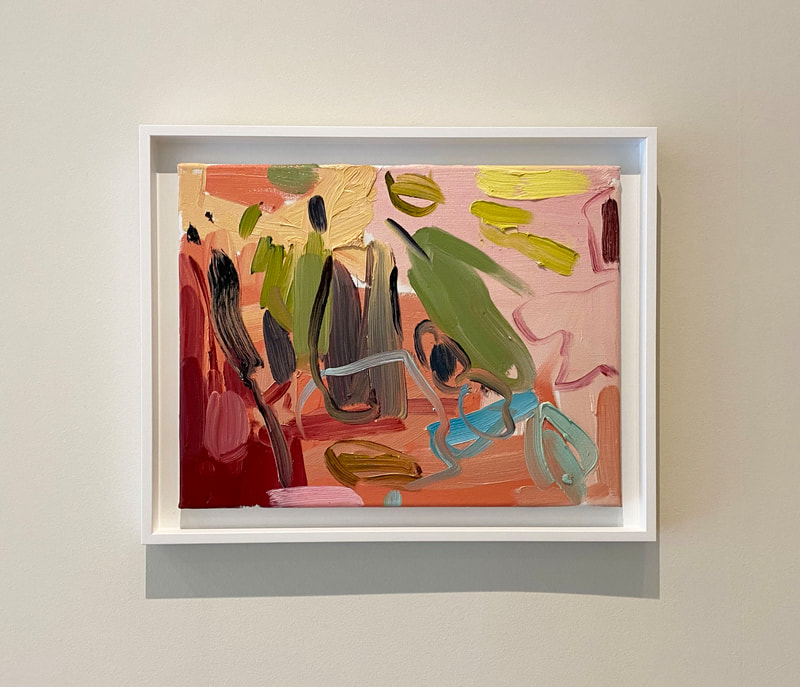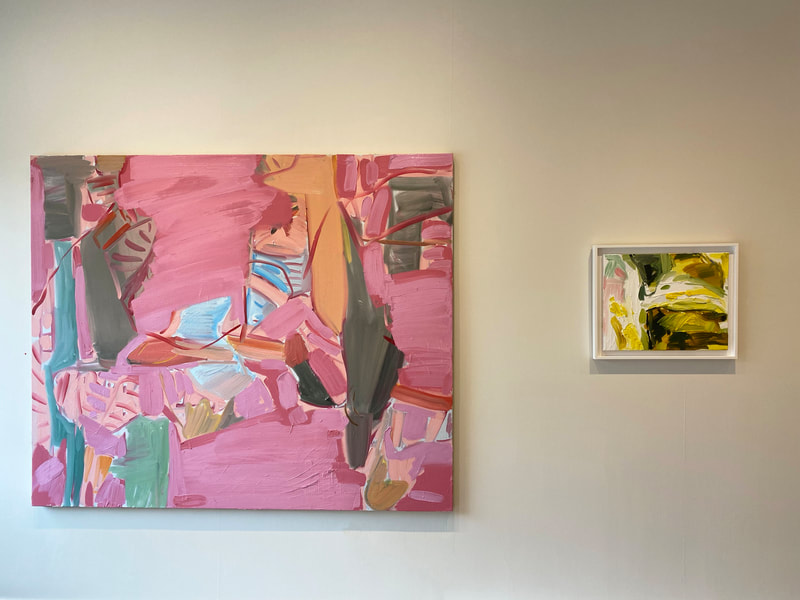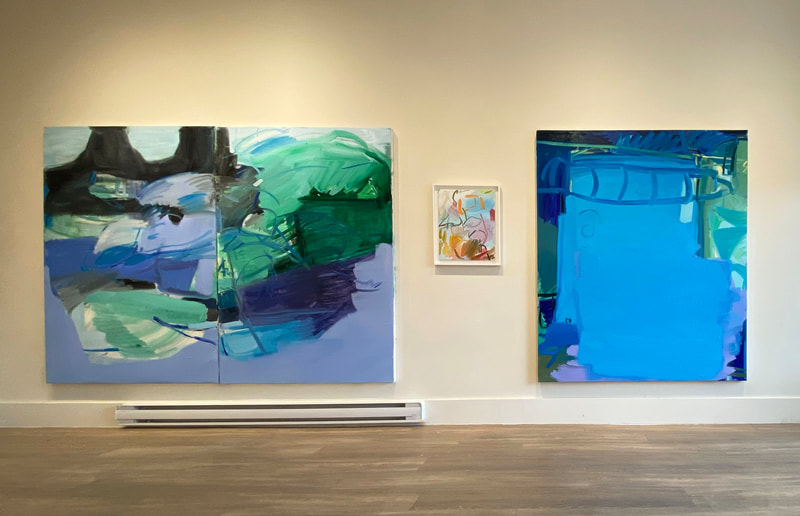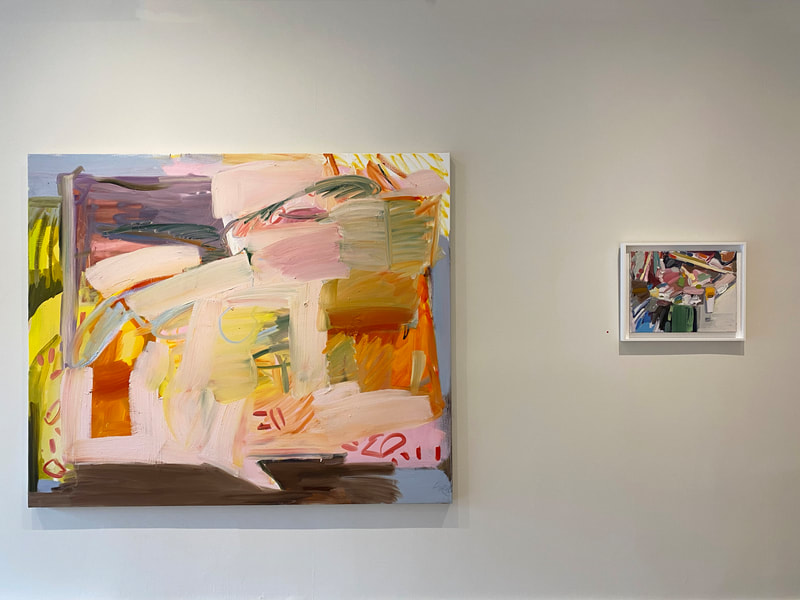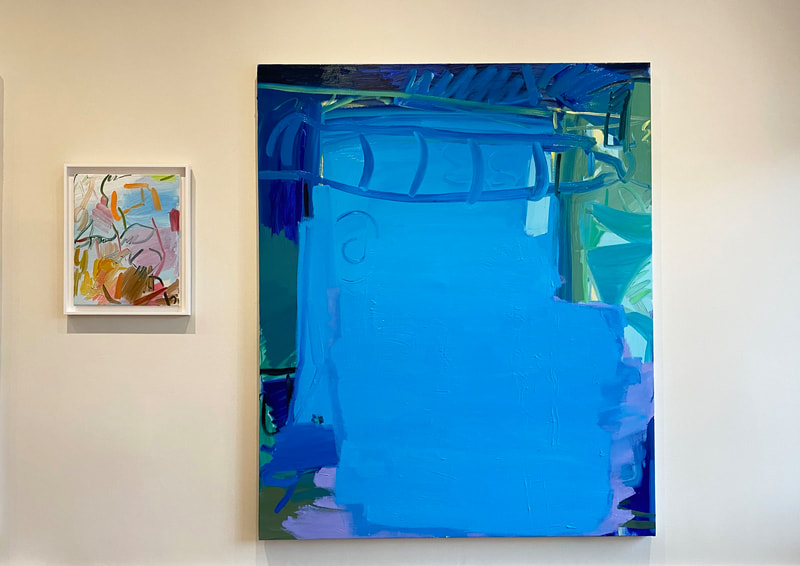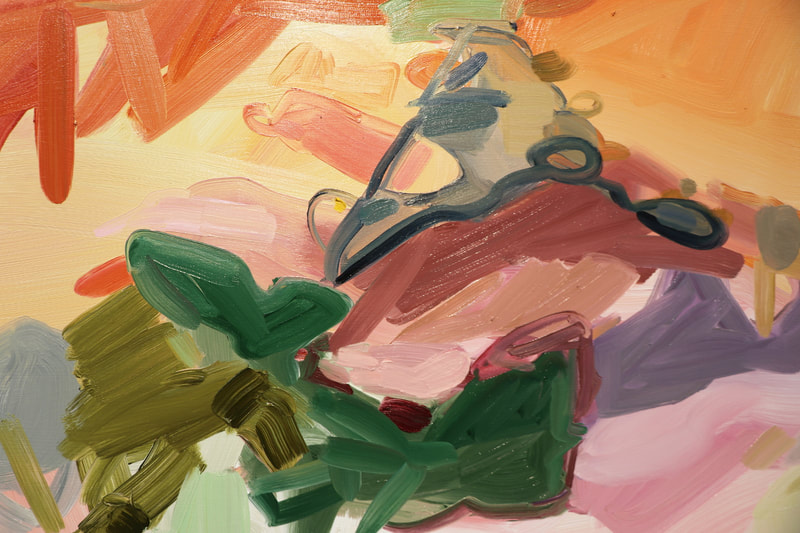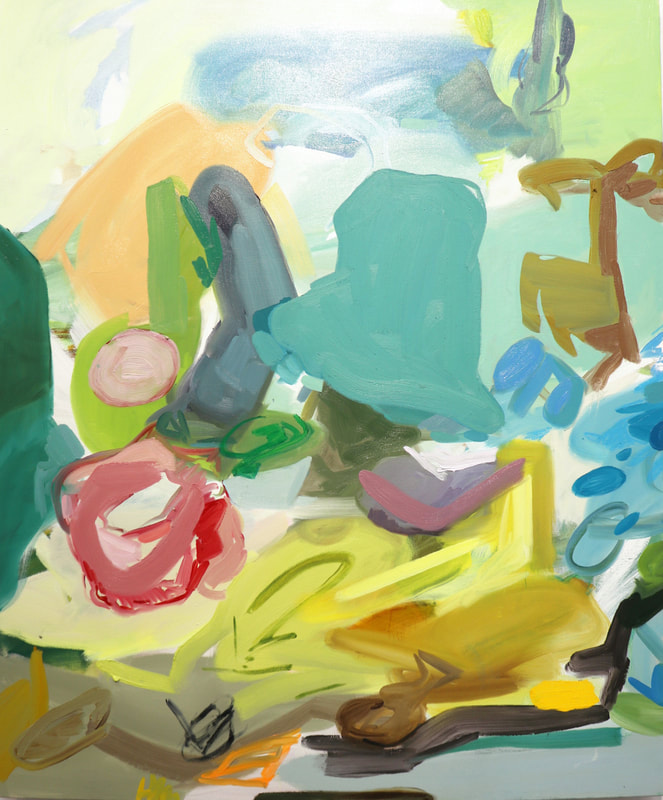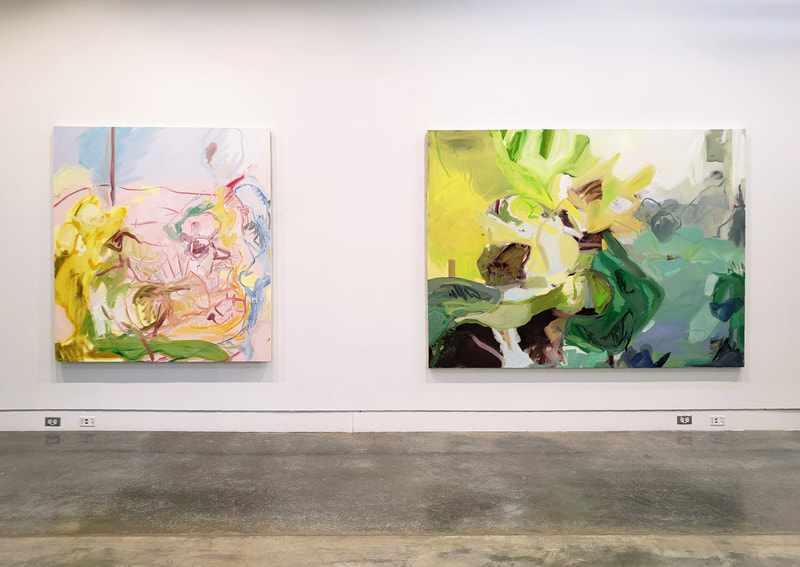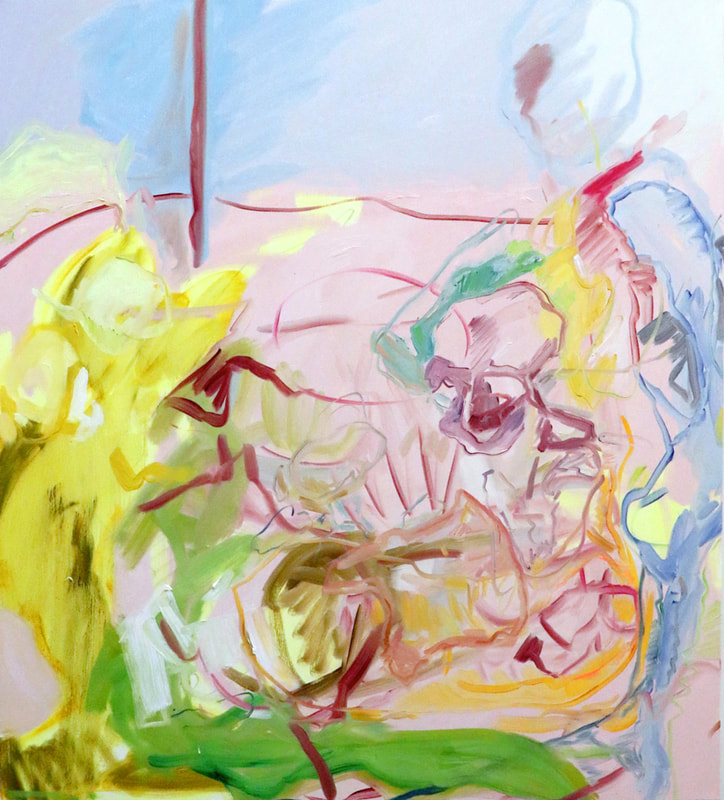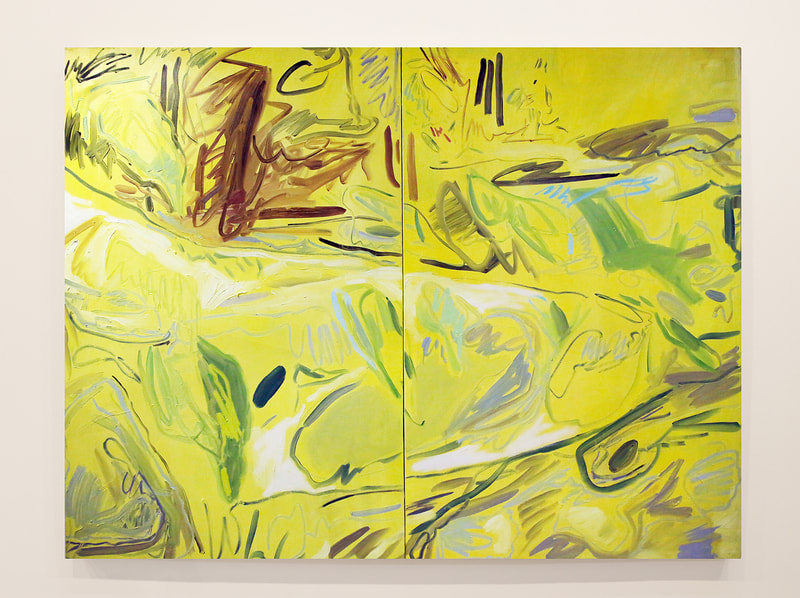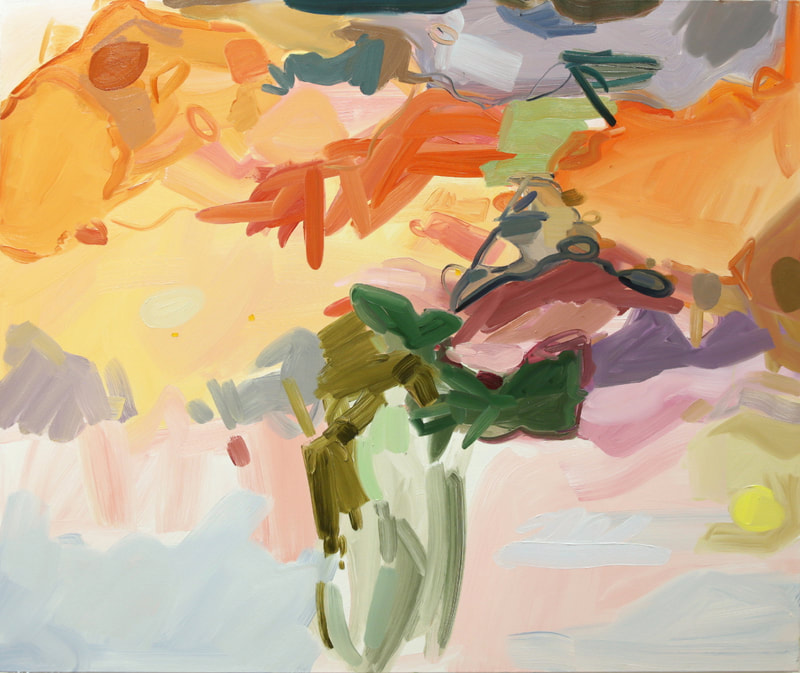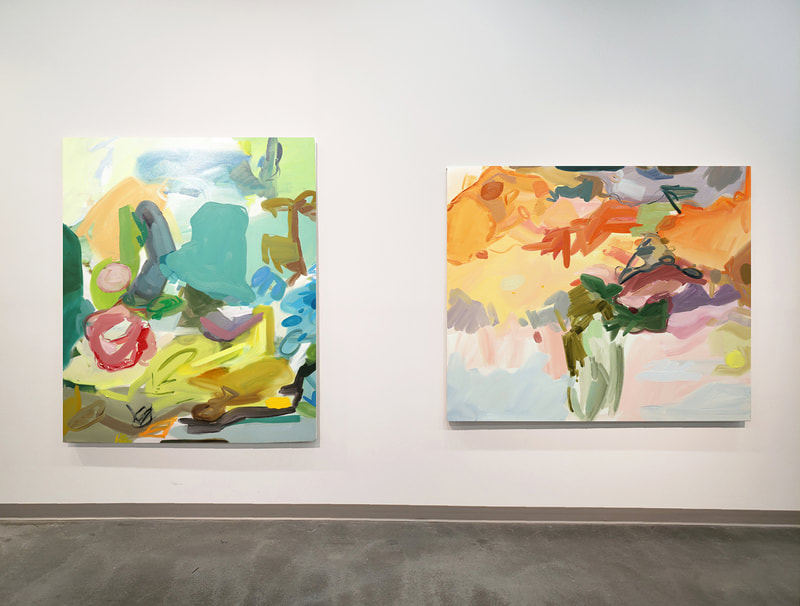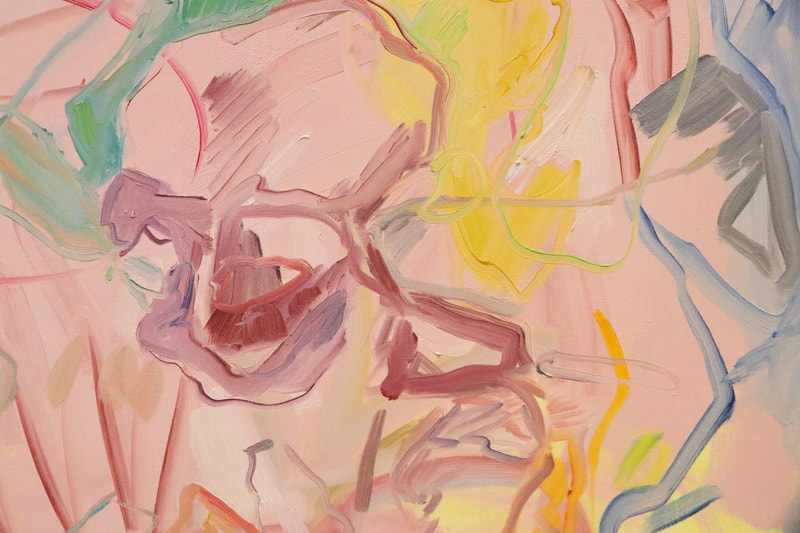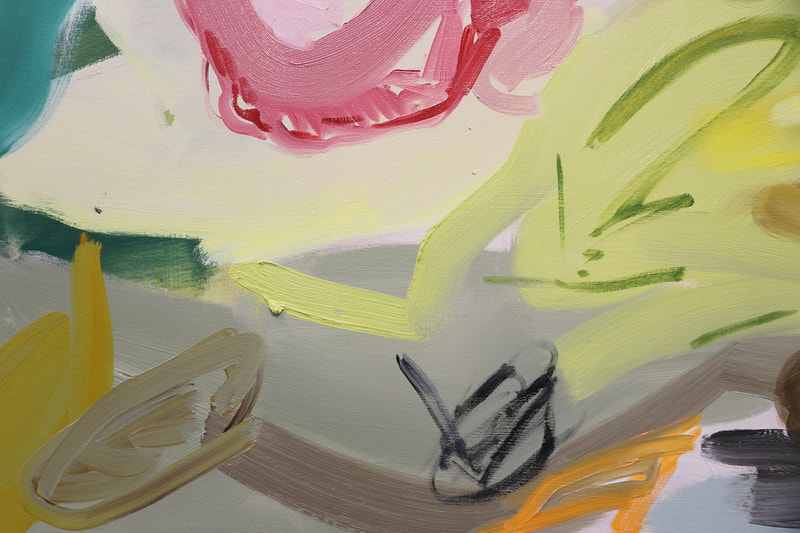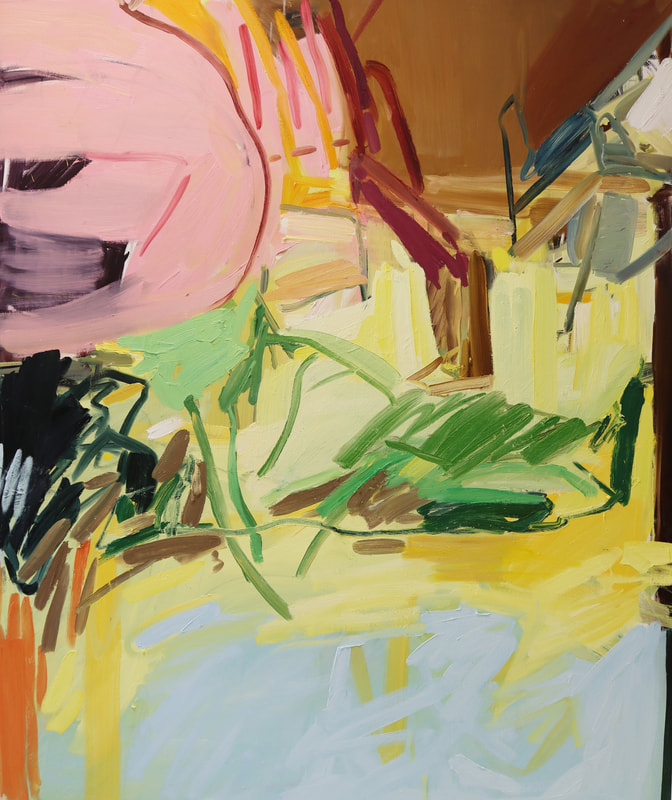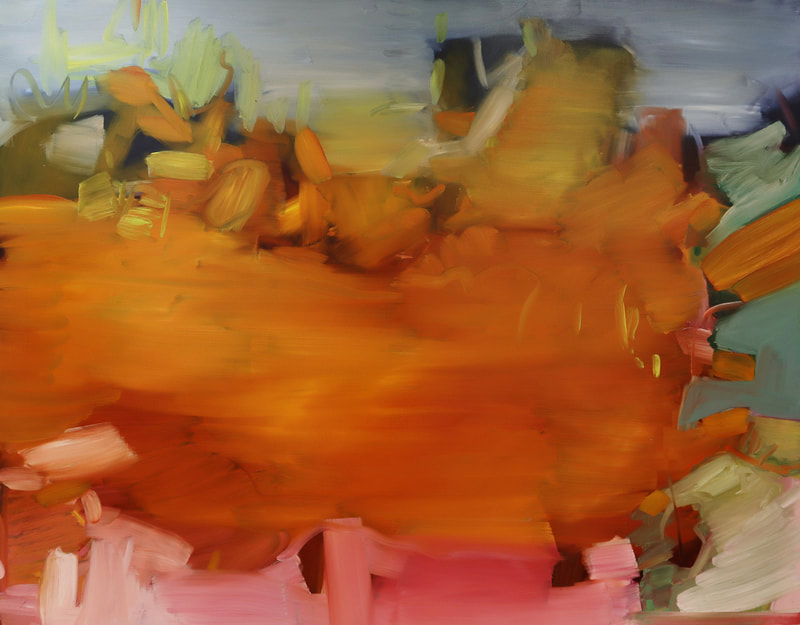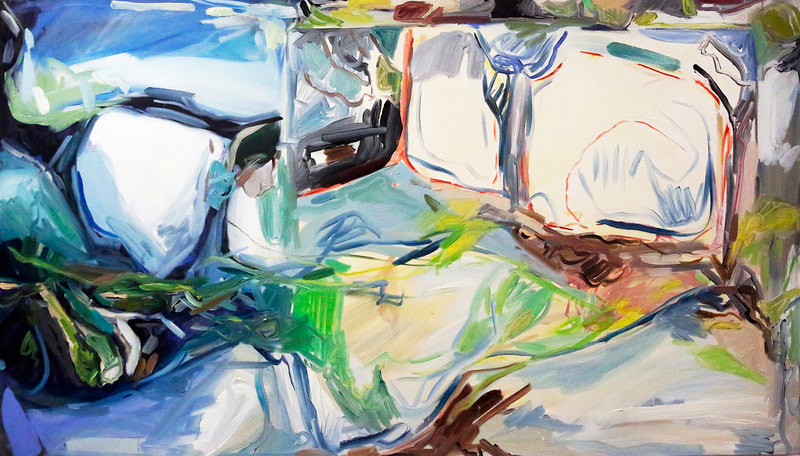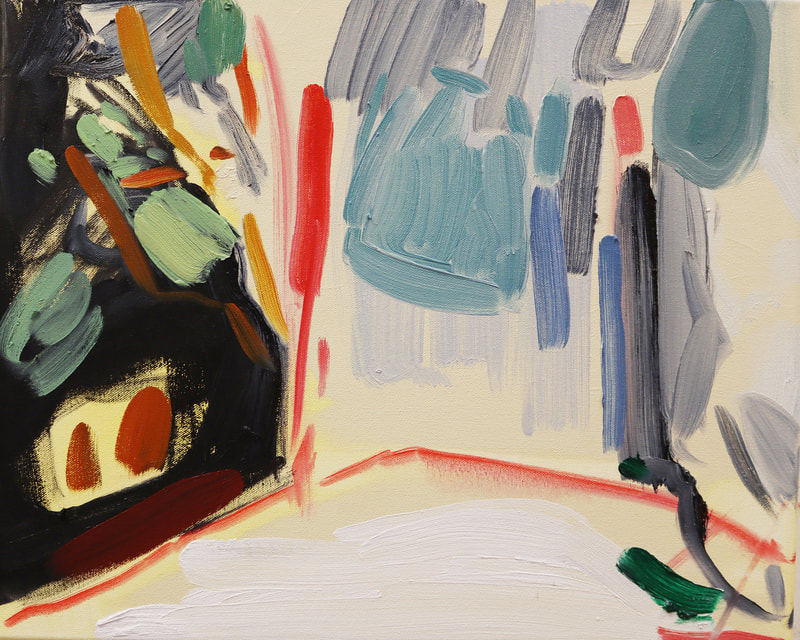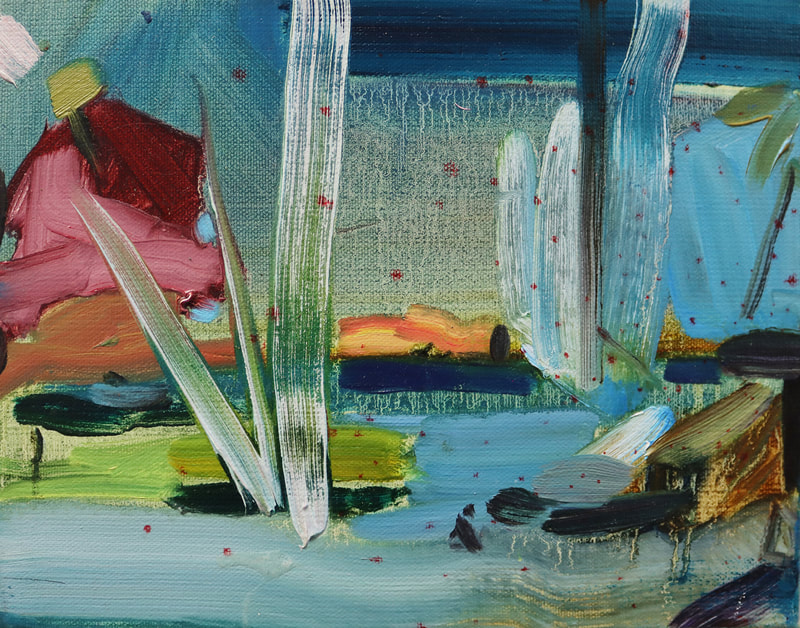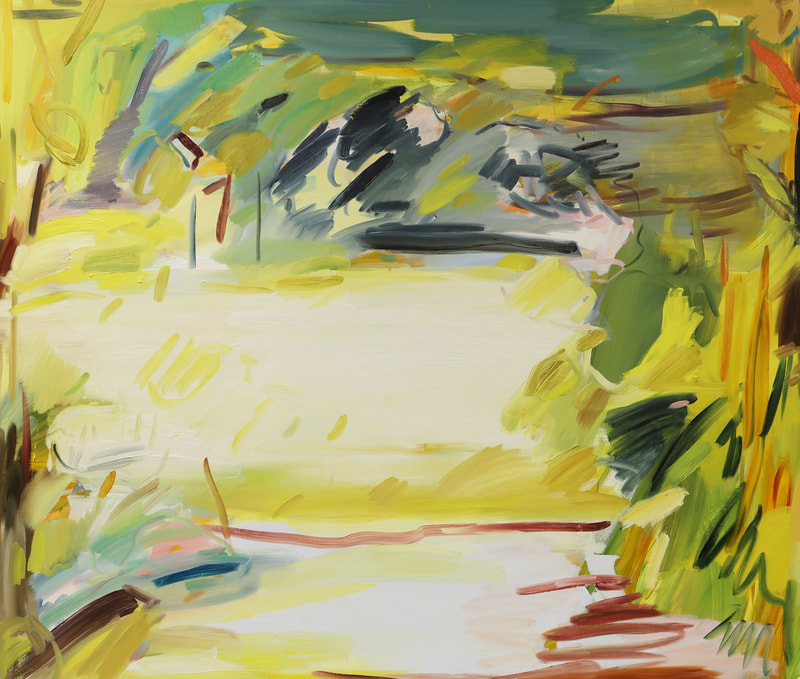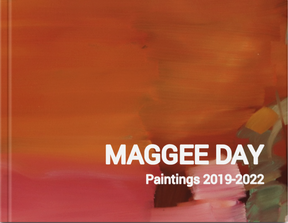Maggee Day
b. London, ON
CV
Maggee Day is a visual artist working predominantly in the medium of oil paint. She studied at OCAD University in Toronto, ON where she received her BFA (2016), and completed her MFA at Emily Carr University in Vancouver, BC (2020). Day’s work challenges traditional conventions of representational painting by exploring new ways to utilize tools in our contemporary painting world. She combines traditional painting techniques, rendering approaches from the digital realm, and loose vandalizing brushstrokes to create complex paintings that oscillate between illusionism and autonomous abstraction. Day has exhibited across Canada and was awarded the 2018 Elizabeth Greenshields Foundation Grant in painting. Day lives and works in Vancouver, on the unceded land of the Coast Salish peoples.
CV
Maggee Day is a visual artist working predominantly in the medium of oil paint. She studied at OCAD University in Toronto, ON where she received her BFA (2016), and completed her MFA at Emily Carr University in Vancouver, BC (2020). Day’s work challenges traditional conventions of representational painting by exploring new ways to utilize tools in our contemporary painting world. She combines traditional painting techniques, rendering approaches from the digital realm, and loose vandalizing brushstrokes to create complex paintings that oscillate between illusionism and autonomous abstraction. Day has exhibited across Canada and was awarded the 2018 Elizabeth Greenshields Foundation Grant in painting. Day lives and works in Vancouver, on the unceded land of the Coast Salish peoples.
New Works at the Gallery
Arts Umbrella - Splash! Auction
Lot #1 "Chill" by Maggee Day sold for double the estimate at $8,500
Arts Umbrella Online and Live Auction
40th Anniversary
October 22, 2022
Splash is Arts Umbrella’s annual art auction with proceeds benefiting young people across Metro Vancouver in the visual and performing arts. The 40th Anniversary of Splash, presented by Nicola Wealth, will feature glamorous gala experiences, both in-person and at-home. The in-person gala will be held at the Fairmont Hotel Vancouver and feature evening entertainment, elegant food & cocktails, student performances and culminate in the spectacular Live Auction. The art auction and evening entertainment will be broadcast live from the Fairmont Hotel Vancouver and guests can join from anywhere across Canada and beyond. At-home catering deliveries will be available for guests in select cities.
We are grateful to the generosity of our artists that year after year contribute to this wonderful institution. Our artists are both in the Live and Silent Auction. Many thanks to Maggee Day (Live Auction), Enrique Manchon, Andrea Taylor, Mina Totino and Terrence Turner for their contributions.
Arts Umbrella Online and Live Auction
40th Anniversary
October 22, 2022
Splash is Arts Umbrella’s annual art auction with proceeds benefiting young people across Metro Vancouver in the visual and performing arts. The 40th Anniversary of Splash, presented by Nicola Wealth, will feature glamorous gala experiences, both in-person and at-home. The in-person gala will be held at the Fairmont Hotel Vancouver and feature evening entertainment, elegant food & cocktails, student performances and culminate in the spectacular Live Auction. The art auction and evening entertainment will be broadcast live from the Fairmont Hotel Vancouver and guests can join from anywhere across Canada and beyond. At-home catering deliveries will be available for guests in select cities.
We are grateful to the generosity of our artists that year after year contribute to this wonderful institution. Our artists are both in the Live and Silent Auction. Many thanks to Maggee Day (Live Auction), Enrique Manchon, Andrea Taylor, Mina Totino and Terrence Turner for their contributions.
Past Exhibition at MRG
This Must Be The Place
First Solo Exhibition of Maggee Day with Mónica Reyes Gallery at Mackenzie Heights
Mónica Reyes Gallery is excited to launch our second Vancouver location at W. 33rd Avenue and Mackenzie Street with a show of new works by Maggee Day. This Must Be The Place marks the first solo exhibition of Day with the gallery. The assertiveness of the exhibition’s title inherently poses the question: Is it really the place? This question works to unfold layers of interpretation and points to the ambivalence that constitutes Day's abstractions.
"I paint the everyday, the mundane, what is always here yet not always noticed. The paintings in this show represent my immediate surroundings, they are the objects, patterns, colors and moments that I collect. Through sketchbook drawings, watercolours, and quick digital studies, I immortalize the colour relations that emerge from folding laundry, the crooked shape of an old paint tube, the checkered pattern on my winter jacket, the negative space between the puzzles and yarn on my bookshelf, and the colour palette from a Pierre Bonnard book on my coffee table. With this series, I am taking note of all that catches my eye– acknowledging that a painting can start from anywhere. I challenge myself to reconsider these daily moments through an abstracted painterly lens, attempting to look at these objects without a preconceived idea of what they are. I break them down into formal shapes and colour relations.
This abstraction from object to sketch is further developed as my process goes on: the subjects get even more broken down. I translate the sketch or digital drawing onto a large canvas, placing different studies awkwardly beside or on top of one another. I shift perspective and play with proximity and association to further distance the image from the object. From there I step back and allow the painting to tell me what is working, what is not, what needs to dry, what can be worked on wet on wet. From this dialogue between the painting and I, I know which sections I can completely paint over it, which one I should scrape off, which one will remain. Every brushstroke will call for a different colour, shape, or composition– the whole painting gets pushed around in this process of creating, reflecting and reacting. I never know what the final painting will look like. This improvisation allows me to react to the painting, it allows the painting to be alive– the painting is constantly morphing and changing, following my body’s movements.
It is important that in the final painting, the objects used are not recognizable. Ambiguity allows the painting to be more than a representation of a coffee cup or a plaid shirt, it becomes something that I don’t fully understand– an expression beyond words or continuous thought. The objects are now open to be rethought and renegotiated. These incongruities allow me to retrospectively learn more about the relationships between seeing and abstraction, perception and representation, as well as the material potential of paint. For me, this is where the magic of painting lies, it is an abstract language that materializes the subconscious and offers a visual experience for both the artist and the viewer." -- Maggee Day
"I paint the everyday, the mundane, what is always here yet not always noticed. The paintings in this show represent my immediate surroundings, they are the objects, patterns, colors and moments that I collect. Through sketchbook drawings, watercolours, and quick digital studies, I immortalize the colour relations that emerge from folding laundry, the crooked shape of an old paint tube, the checkered pattern on my winter jacket, the negative space between the puzzles and yarn on my bookshelf, and the colour palette from a Pierre Bonnard book on my coffee table. With this series, I am taking note of all that catches my eye– acknowledging that a painting can start from anywhere. I challenge myself to reconsider these daily moments through an abstracted painterly lens, attempting to look at these objects without a preconceived idea of what they are. I break them down into formal shapes and colour relations.
This abstraction from object to sketch is further developed as my process goes on: the subjects get even more broken down. I translate the sketch or digital drawing onto a large canvas, placing different studies awkwardly beside or on top of one another. I shift perspective and play with proximity and association to further distance the image from the object. From there I step back and allow the painting to tell me what is working, what is not, what needs to dry, what can be worked on wet on wet. From this dialogue between the painting and I, I know which sections I can completely paint over it, which one I should scrape off, which one will remain. Every brushstroke will call for a different colour, shape, or composition– the whole painting gets pushed around in this process of creating, reflecting and reacting. I never know what the final painting will look like. This improvisation allows me to react to the painting, it allows the painting to be alive– the painting is constantly morphing and changing, following my body’s movements.
It is important that in the final painting, the objects used are not recognizable. Ambiguity allows the painting to be more than a representation of a coffee cup or a plaid shirt, it becomes something that I don’t fully understand– an expression beyond words or continuous thought. The objects are now open to be rethought and renegotiated. These incongruities allow me to retrospectively learn more about the relationships between seeing and abstraction, perception and representation, as well as the material potential of paint. For me, this is where the magic of painting lies, it is an abstract language that materializes the subconscious and offers a visual experience for both the artist and the viewer." -- Maggee Day
Maggee Day, This Must Be the Place
By Helena Wadsley, February 2022
The cobalt blue glow emitting from a backlit billboard was the inspiration for Thirty Three, so titled because it is the thirty-third study in a series; the number itself reveals much about Maggee Day’s process. In an earlier rendition of this painting, she had depicted a plaid jacket casually thrown down, part of an everyday domestic scene. Day begins a painting by observing the details of her environment, but rather than let them become descriptive, she caches them. A large block of blue is slathered over smoothly but for the impastoed brush marks that push through the blanket of paint to hint at the painting’s previous iteration. The blue brings a quietude. Day paints from life, then covers over areas to arrive at a composition that denies representation while giving the painting agency, allowing the paint to speak for itself, to have a life of its own. As such, the paint takes no prisoners. If forms emerge, paint is mopped over, leaving only traces underneath a luscious new layer.
An acute observer, Day’s eye caught the details of scenes observed on her daily commute to and from art school, the movement translated as swathes of colour. When the pandemic began, she turned her eye to the everyday scenes in her home—tossed clothing, a cooked bird on a platter, a dog-themed calendar, mundane items that took on heightened meaning during the ‘stay at home’ period of the pandemic, their forms reinvented by Day’s confident brush. The resulting works, whether large scale or small, give us an energy through gestural marks and an animated palette dominated by tinted colours.
The smaller works, such as Fragment 6 or Fragment 7, hone in on details from larger works. This process allows a further deconstruction of the rendering of imagery, and it shows through the playfulness of the brushwork. In Fragment 7, the paint is buttery and tactile. In View 14, the shorter marks and wider range of colour show controlled energy.
Day relishes upending not only our expectations of descriptiveness and narrative in a painting but conventions of painting processes. Rather than working with drawing first, then painting, she will draw onto the painted surface. Rather than working from general to specific, she will begin with smaller brushes and switch to big ones to unify areas or heighten the negative space. In Negative Spaces 1, the first in her newest series, she flips her process of erasure by drawing attention to the shapes created in the spaces in between. Another flip, the pink was inspired by Philip Guston’s predominantly pink works; he began as an abstract painter and turned to representation, while Day achieves the opposite in each of her works, transforming the detritus of daily life into a satisfying arrangement of entropic dabs of colour versus open, but far from empty, expanses.
An acute observer, Day’s eye caught the details of scenes observed on her daily commute to and from art school, the movement translated as swathes of colour. When the pandemic began, she turned her eye to the everyday scenes in her home—tossed clothing, a cooked bird on a platter, a dog-themed calendar, mundane items that took on heightened meaning during the ‘stay at home’ period of the pandemic, their forms reinvented by Day’s confident brush. The resulting works, whether large scale or small, give us an energy through gestural marks and an animated palette dominated by tinted colours.
The smaller works, such as Fragment 6 or Fragment 7, hone in on details from larger works. This process allows a further deconstruction of the rendering of imagery, and it shows through the playfulness of the brushwork. In Fragment 7, the paint is buttery and tactile. In View 14, the shorter marks and wider range of colour show controlled energy.
Day relishes upending not only our expectations of descriptiveness and narrative in a painting but conventions of painting processes. Rather than working with drawing first, then painting, she will draw onto the painted surface. Rather than working from general to specific, she will begin with smaller brushes and switch to big ones to unify areas or heighten the negative space. In Negative Spaces 1, the first in her newest series, she flips her process of erasure by drawing attention to the shapes created in the spaces in between. Another flip, the pink was inspired by Philip Guston’s predominantly pink works; he began as an abstract painter and turned to representation, while Day achieves the opposite in each of her works, transforming the detritus of daily life into a satisfying arrangement of entropic dabs of colour versus open, but far from empty, expanses.
Exhibition view "This Must Be The Place"
Damian Moppett about Maggee Day
When I am looking at an artwork of any kind, I need to be able to articulate the context of what is being presented in order to best understand how a work is operating. Am I looking at a work that is interested in describing something that exists in the world, or is it a work that exists, not as description, but as a record of a creative impulse? Both paths can accommodate representational or abstract imagery alike, but each works differently in terms of how the work is ultimately interpreted. With visually descriptive works, the author is situated as the filter, or the eyes, at the beginning of the interaction. The other path situates the author beside the work, decidedly wanting to be seen as an equal to the work itself, making the author’s position and interests key to understanding the work’s meaning. Specifically, paintings such as this often employ a myriad of tropes and clues to make sure their historical references are not overlooked. One path has the work as spectacle with little requisite knowledge required from the viewer, and the other needs to be properly contextualized within a specific history in order to be fully appreciated.
Maggee Day’s paintings walk a tricky line: they flirt with both of the over-simplified positions described above. The content is derived from observation. She has described her practice as parallel to plein air painting, in that the inspiration for many of her paintings have come from working and re-working a depiction of a still life or landscape. A remembered scene or a photo can act as a starting point in a lengthily process of working and re-working a painting founded on an observation. To know this changes the interpretation of the work.
Day uses painterly tropes and signifiers that could very easily be used to place her work in conversation with abstract expressionism and its history, especially in relation to 50’s, 60’s and 70’s abstraction coming out of the USA. Artists like Willem De Kooning or even Philip Guston come to mind when looking at Day’s paintings. Adjectives like ‘chunky’ or ‘slippery’ come to mind; objects in her paintings are wavering on the edge of being described, only to be denied or obscured at the last minute by a brush stroke or incongruent colour choice. Instead of the kitsch of de Kooning’s later works or cartoonish weight of Guston’s works after 1969, Day, while conjuring paintings that show a definite interest in those histories, chooses a path more aligned with observation and description than signifying historical tropes. Her paintings glance back at those histories and similarly look to the works of Amy Sillman and Cecily Brown’s more recent works for commonalities in ways of working a sketch into an abstraction. The overly romantic ‘joke’ of the painted abstraction is very quickly stripped away to expose a more personal and observational lexicon of painted forms and spaces.
There’s an impatience to Day’s work; I can recognize that in each of her paintings, nothing is sacred. No shape or painted passage is safe from the obliterating paintbrush loaded with paint. Each painting acknowledges that it started with the depiction of a scene and then very quickly became something else entirely. Just as many passages are blocked out, smudged or covered up as are preserved and highlighted proudly. The paintings start as a fondness for a garden space or a tabletop with flowers, only to lurch into a meandering line from an oil stick. It’s this impatience and speed of execution that I enjoy in the work; to employ those characteristics in a painting you need confidence and skill. You also need to risk being playful with your work, which is abundant in Day’s work. There’s a graciousness in how they posit themselves and there’s subtlety and nuance to their language. Their execution is what you’re invited to imagine playing out in front of you. Completed but not done, here in the now, looking both forwards and back as work that has the persistence of a moment painted.
Maggee Day’s paintings walk a tricky line: they flirt with both of the over-simplified positions described above. The content is derived from observation. She has described her practice as parallel to plein air painting, in that the inspiration for many of her paintings have come from working and re-working a depiction of a still life or landscape. A remembered scene or a photo can act as a starting point in a lengthily process of working and re-working a painting founded on an observation. To know this changes the interpretation of the work.
Day uses painterly tropes and signifiers that could very easily be used to place her work in conversation with abstract expressionism and its history, especially in relation to 50’s, 60’s and 70’s abstraction coming out of the USA. Artists like Willem De Kooning or even Philip Guston come to mind when looking at Day’s paintings. Adjectives like ‘chunky’ or ‘slippery’ come to mind; objects in her paintings are wavering on the edge of being described, only to be denied or obscured at the last minute by a brush stroke or incongruent colour choice. Instead of the kitsch of de Kooning’s later works or cartoonish weight of Guston’s works after 1969, Day, while conjuring paintings that show a definite interest in those histories, chooses a path more aligned with observation and description than signifying historical tropes. Her paintings glance back at those histories and similarly look to the works of Amy Sillman and Cecily Brown’s more recent works for commonalities in ways of working a sketch into an abstraction. The overly romantic ‘joke’ of the painted abstraction is very quickly stripped away to expose a more personal and observational lexicon of painted forms and spaces.
There’s an impatience to Day’s work; I can recognize that in each of her paintings, nothing is sacred. No shape or painted passage is safe from the obliterating paintbrush loaded with paint. Each painting acknowledges that it started with the depiction of a scene and then very quickly became something else entirely. Just as many passages are blocked out, smudged or covered up as are preserved and highlighted proudly. The paintings start as a fondness for a garden space or a tabletop with flowers, only to lurch into a meandering line from an oil stick. It’s this impatience and speed of execution that I enjoy in the work; to employ those characteristics in a painting you need confidence and skill. You also need to risk being playful with your work, which is abundant in Day’s work. There’s a graciousness in how they posit themselves and there’s subtlety and nuance to their language. Their execution is what you’re invited to imagine playing out in front of you. Completed but not done, here in the now, looking both forwards and back as work that has the persistence of a moment painted.
Doorstep View Series
"In my paintings, I explore the various ways I can see the space in front of my apartment building, and by extension, the various ways this space can be represented through paint. The doorstep is the location where my exploration begins. By selecting this familiar location as the site of my study, I am able to observe a subject that is mundane and everyday through a lens of objectivity, while reevaluating how I construct a representational painting.
I employ an experimental process while producing these paintings, which includes a rule that every painting must change its order of procedures and materials. The purpose of this rule is to highlight the different choices that a painter can make when approaching a subject. For example, I have a choice to capture the visual information in a photograph, or to translate my perceived reality through plein air painting. This decision and others reveal infinite possibilities. In addition, I deliberately throw wrenches into my process in order to disrupt the illusion of painting. These wrenches include translating information from one medium to another, layering images wet-on-wet, and rotating the canvas.
This process of making decisions and inviting accidents opens up a margin of error between what I think and what I do— the application of paint follows an artist’s body and is influenced by their emotional state, critically, an artist is also led by the paint they apply and how it behaves. In my paintings, the doorstep view is pulled apart into abstracted colours and shapes, while retaining some semblance of three dimensional space and elements within it. However, these fragments are now open to be renegotiated because they do not form a recognizable landscape. These incongruities allow me to retrospectively learn more about the relationships between seeing and abstraction, perception and representation, as well as the material potential of paint."
-- Maggee Day
I employ an experimental process while producing these paintings, which includes a rule that every painting must change its order of procedures and materials. The purpose of this rule is to highlight the different choices that a painter can make when approaching a subject. For example, I have a choice to capture the visual information in a photograph, or to translate my perceived reality through plein air painting. This decision and others reveal infinite possibilities. In addition, I deliberately throw wrenches into my process in order to disrupt the illusion of painting. These wrenches include translating information from one medium to another, layering images wet-on-wet, and rotating the canvas.
This process of making decisions and inviting accidents opens up a margin of error between what I think and what I do— the application of paint follows an artist’s body and is influenced by their emotional state, critically, an artist is also led by the paint they apply and how it behaves. In my paintings, the doorstep view is pulled apart into abstracted colours and shapes, while retaining some semblance of three dimensional space and elements within it. However, these fragments are now open to be renegotiated because they do not form a recognizable landscape. These incongruities allow me to retrospectively learn more about the relationships between seeing and abstraction, perception and representation, as well as the material potential of paint."
-- Maggee Day
In the Garden
Dual exhibition with Mina Totino
“In the Garden” entwines works by well-established Vancouver artist Mina Totino and up and coming artist Maggee Day. The thought of the garden comprises and encompasses many phenomena of our daily lives. It is at this time of the year that the garden, whether it is a collection of small pots of flowers on a patio or a lavish backyard or public garden it is something that surrounds most of us daily, consciously or not.
Vibrant colors and strong brush strokes bring the semblance of a garden and nature inside the gallery space, emphasizing Maggee Day's approach for this exhibited series “Doorstep view”. In her painterly process Day depicts the view of her doorstep, a view from inside the home into the outside, into the garden inspiring bold abstract views.
Mina Totino's works presented in this exhibition are part of her most recent exploration of the monochrome resulting in monochrome works – not really being monochrome. The compositions defined by multilayers of color and tactile attributes elude any classification or predetermined associations, however, like a view in a garden, delicately evolving in front of your eyes - “[...] quiet, slow, enveloping, like a waltz; delicate, fragile, and on the verge of materiality breaking or losing thought or form. [...]”[i]
The layout of the individual works of Day and Totino throughout the gallery space is suggestive of the garden and full circle of nature, from subtle green tones in “Doorstep view 4” to “Doorstep view 7” to Totino's “Turkey Umber (Williamsburg)”, reminiscent of spring and blooming, decomposition, decay and renewal.
“In the Garden” entwines works by well-established Vancouver artist Mina Totino and up and coming artist Maggee Day. The thought of the garden comprises and encompasses many phenomena of our daily lives. It is at this time of the year that the garden, whether it is a collection of small pots of flowers on a patio or a lavish backyard or public garden it is something that surrounds most of us daily, consciously or not.
Vibrant colors and strong brush strokes bring the semblance of a garden and nature inside the gallery space, emphasizing Maggee Day's approach for this exhibited series “Doorstep view”. In her painterly process Day depicts the view of her doorstep, a view from inside the home into the outside, into the garden inspiring bold abstract views.
Mina Totino's works presented in this exhibition are part of her most recent exploration of the monochrome resulting in monochrome works – not really being monochrome. The compositions defined by multilayers of color and tactile attributes elude any classification or predetermined associations, however, like a view in a garden, delicately evolving in front of your eyes - “[...] quiet, slow, enveloping, like a waltz; delicate, fragile, and on the verge of materiality breaking or losing thought or form. [...]”[i]
The layout of the individual works of Day and Totino throughout the gallery space is suggestive of the garden and full circle of nature, from subtle green tones in “Doorstep view 4” to “Doorstep view 7” to Totino's “Turkey Umber (Williamsburg)”, reminiscent of spring and blooming, decomposition, decay and renewal.
|
Maggee Day | Paintings 2019-2022 | Edit and design Mónica Reyes Gallery, 2022 ISBN: 978-7777401-3-9 available online in our Viewing Room |
